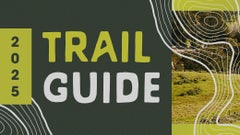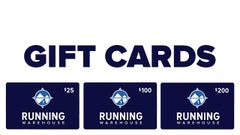A Guide to the Western States 100-Mile Endurance Run and Training Tips
Updated: July 8, 2024 by Grace Booth
The Western States 100-Mile Endurance Run, or WSER, is one of the most grueling endurance races in the world, covering 100 miles of rugged terrain in the Sierra Nevada Mountains of California. With over 18,000 feet of elevation gain and loss, the race presents a formidable challenge for even the most experienced ultra runners. Conquering this ultimate endurance challenge requires not only physical fitness and mental toughness but also meticulous planning and preparation. In this article, we'll provide a comprehensive guide to the Western States 100 race, including training tips and strategies to help you tackle this iconic race with confidence.

The History of the Western States 100
The Western States 100-Mile Endurance Run is one of the world's oldest and most prestigious ultra-marathons. It is a 100-mile trail race that starts in Squaw Valley, California and concludes at Placer High School track in Auburn, California. The race was first run in 1974 and has been held annually since then, with the exceptions of 2008, when wildfires caused its cancellation, and in 2020 due to the pandemic. The race took inspiration from the horse race called the Tevis Cup, which took place in 1955. The Tevis Cup is a 100-mile horse race that covers some of the same trails as the Western States race. Gordy Ainsleigh, a runner from Auburn, California, frequently participated in the Tevis Cup and was inspired to try running the course himself, sans horse. In 1974, he set out to run the course unsupported and finished in just under 24 hours, making it the first run of what would later be known as the Western States 100-Mile Endurance Run. The race quickly gained popularity among ultrarunners and has since become one of the most renowned ultra-marathons worldwide.
Getting In: Lottery System, Golden Tickets, Top 10

The Western States 100 lottery is an annual lottery system used to determine the entrants for the Western States Endurance Run. The lottery usually is held in early December, with entrants selected based on qualifying criteria and random chance. To be eligible for the lottery, runners must have completed a qualifying 100-kilometer or 100-mile trail race within the previous year or finish one of the designated qualifying races before the lottery date. The lottery system is in place to provide fairness, ensure a diverse field of runners, and maintain the race's reputation as a challenging and competitive event. The lottery is limited to 369 runners due to the permit requirements with the U.S. Forest Service. In recent years, the odds of getting selected through the lottery have been around 2-10%, meaning that only a few applicants are successful in securing a spot. Ultimately, the likelihood of being chosen depends on the number of applicant names in the hat versus the number of available slots. Runners who don't get selected by lottery will receive additional tickets added to the hat for future lotteries, improving their probability of being picked next time.
Another way to gain entry is through Golden Ticket Races. These are selected races throughout the country where the top two male and female finishers receive a guaranteed spot in the Western States 100, bypassing the lottery system. The top 10 male and female finishers from the previous year's Western States race also obtain automatic race entry.
Crewing at Western States
It takes more than just a runner's training and determination to complete the WS100 race; it takes a crew of dedicated supporters as well. Crewing for a runner in the Western States can be a truly transformative experience. It takes a lot of preparation to be a good crew, ensuring an athlete has the proper nutrition and gear ready for them at aid stations along the way. The crew must be patient, waiting for their runner and quickly providing them with the necessary support they need so that they can get back in the race. It's important to connect with the runner and understand their needs, meeting them at different aid stations and providing encouragement and motivation. While it is a long and tiring process, seeing your runner cross the finish line is a rewarding experience that makes it all worthwhile.
Tips for Training and Preparing for Western States 100
1. Have a Race Plan
Before diving into training, it's essential to have a solid race preparation plan. First and foremost, you must understand the race terrain, conditions (heat and altitude), aid stations, and crewing options. The Western States 100 features 20 aid stations, providing runners with a variety of fuel options, from water and sports drinks to solid foods like sandwiches and fruit. It's important to plan ahead and know which aid stations to use for rest and refueling. Crewing is also available at specific aid stations, and having a support crew can provide an immense mental boost during the race.
2. Stick With Your Training Regimen
The key to success in the Western States 100 is a well-planned training regimen. High mileage and time on your feet are crucial for success in this endurance challenge. Since the race features a mix of technical and steep terrain, it's pivotal that you train on similar trail types. Elevation gain is a significant challenge in this race, so incorporating hill repeats and long runs with plenty of hills will help build endurance. Pacing strategy is also crucial. Starting too fast can lead to burnout and exhaustion while starting too slow can make it challenging to finish within the 30-hour time limit.
3. Dial In You Nutrition and Hydration Ahead of Time
Endurance running demands proper fueling and hydration. In the Western States 100, runners must be mindful of their nutrition and hydration, as the race covers some of the most remote terrains in the Sierra Nevada Mountains. Consuming a mix of carbohydrates, fats, and proteins will help fuel the body during the race. The Western States Endurance Run can get up to 115 degrees in the canyons, so hydration strategies must also be planned out, and runners should aim to consume water and electrolyte-rich fluids throughout the race.
4. Stay Injury Free
Injury prevention is essential in the Western States 100. Ensure your feet are shielded from the rugged terrain by having proper trail shoes with sufficient protection and a comfortable fit. Incorporate strength training and stretching exercises to prevent muscle fatigue and injury. Rest and recovery are just as important as training, and including rest days and recovery techniques like massage therapy and foam rolling will help ensure optimal performance.
5. Develop Mental Toughness
Finally, the Western States 100 requires incredible mental toughness. Ultramarathons are physically and mentally demanding, and this race is no exception. Focusing on mental toughness training through visualization and positive self-talk will help prepare runners for the inevitable lows of the race.
In conclusion, the Western States 100 is one of the most grueling ultramarathons in the world. It requires strategic race preparation, trail running experience, nutrition and hydration planning, injury prevention techniques, and mental toughness. However, with the proper training, careful planning, and unbreakable mental fortitude, you can conquer this ultimate endurance challenge.
The Western States Belt Buckles
The Western States' belt buckles have become just as legendary as the race itself. The history of the belt buckles dates back to the race's inception and has become a status symbol in the world of ultras. Handmade by Comstock Heritage in Reno, Nevada, the buckle features a bronze cougar for runners with finish times between 24-30 hours and a silver buckle with a bronze cougar for those who finish in 24 hours or less. Every belt buckle is individually engraved and painted by hand, a highly laborious process that typically begins in January. Comstock Heritage has been creating the belt buckles since the beginning of the endurance horse ride in the 1960s, and they continue to be an iconic symbol of accomplishment for those who complete the Western States 100.









